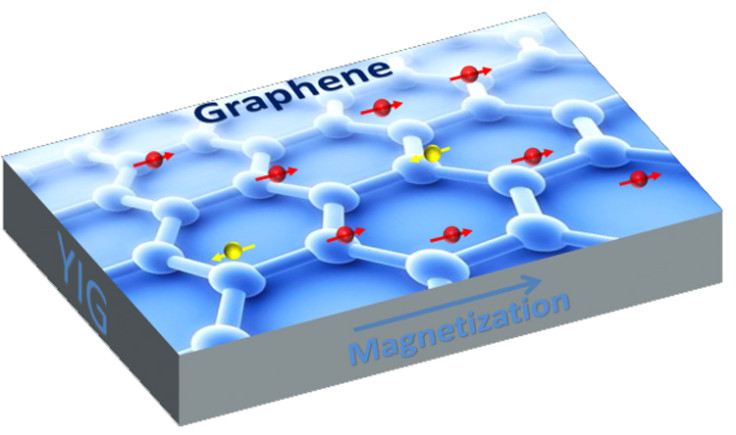Graphene: Reversible method of magnetic doping paves way for use as semiconductor

A team of physicists at University of California, Riverside have discovered how to induce magnetism in graphene in a way that still preserves the material's electronic properties, which paves the way for graphene to be used as a semiconductor.
Graphene is a one-atom-thick material made of carbon atoms arranged in a honeycomb lattice that is 200-times stronger than steel, more conductive than copper and as flexible as rubber.
It has been touted as a "wonder material" by scientists for its remarkable properties and vast range of uses, which include everything from flexible smartphone screens, to artificial retinas.
At the moment, it is only possible to induce magnetism in graphene by doping it with magnetic impurities, but this tends to disrupt the material's electronic properties.
Placing graphene next to yttrium iron garnet
Now researchers have figured out that it is possible to induce magnetism in graphene in a non-destructive and reversible way, by placing a graphene sheet very close to a magnetic insulator (an electrical insulator with magnetic properties).
The researchers grew a sheet of yttrium iron garnet using laser molecular beam epitaxy in a laboratory. Magnetic substances like iron are known to disrupt graphene's electrical conduction properties, but yttrium iron garnet works well as it is an electric insulator.
When a graphene sheet was placed on top of an atomically smooth sheet of yttrium iron garnet, the graphene borrowed the magnetic properties from the yttrium iron garnet and became magnetised without the need for doping.
The researchers also exposed the graphene sheet to an external magnetic field and found that the material's Hall voltage (a voltage in the perpendicular direction to the current flow) depended linearly on the magnetisation of the yytrium iron garnet sheet, which shows that the graphene sheet had indeed been magnetised.
Graphene as a semiconductor could now be possible
The study, entitled "Proximity-Induced Ferromagnetism in Graphene Revealed by the Anomalous Hall Effect" is published in the journal Physical Review Letters.
The key significance of being able to magnetise graphene while enabling it to maintain its remarkable conductive properties, is that the material could be used to make more powerful semiconductor chips in computers and mobile devices.
This would be an attractive proposition especially since researchers in the Netherlands recently demonstrated a new graphene production technique that is 1,000 times cheaper than the current method, which could bring graphene production costs down to about €1 per piece.
"This is the first time that graphene has been made magnetic this way," said Jing Shi, a professor of physics and astronomy, whose lab led the research.
"The magnetic graphene acquires new electronic properties so that new quantum phenomena can arise. These properties can lead to new electronic devices that are more robust and multi-functional."
© Copyright IBTimes 2025. All rights reserved.






















